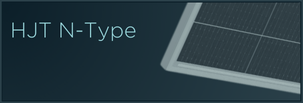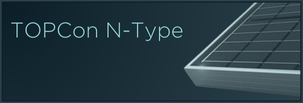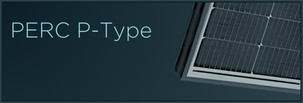
HETEROJUNCTION TECHNOLOGY - HJT
.
Heterojunction technology (HJT) is an N-type two-phase solar cell technology that uses N-type monocrystalline silicon as a substrate and applies thin silicon-based and transparent conductive layers to the front and back surfaces.
.
By combining the advantages of crystalline silicon and amorphous silicon thin film technologies, HJT technology has excellent photoabsorption and passivation effects as well as superior efficiency and performance. HJT panels are one of the technologies that improve the conversion rate and performance to the highest level, and also represent the trend of the next generation of solar cell platform technology.

TOPCon TECHNOLOGY
.
TOPCon stands for Tunnel Oxide Passivated Contact and is a more advanced N-type silicon cell architecture that helps reduce what is known as recombination losses in the cell, which in turn increases cell efficiency.
.
Due to a complex number of factors, several losses occur in a solar cell that cause electrons to escape and recombine back into the silicon without creating an electric current. The ultra-thin TOPCon layer helps to reduce these losses with minimal increase in the cost of the manufacturing process.

PERC TECHNOLOGY
.
Over the past few years, PERC has become the preferred technology of many single and polycrystalline cell manufacturers. PERC stands for "Passivated Emitter and Rear Cell", which is a more advanced cell architecture that uses additional layers on the back of the cell to absorb more photons of light and increase overall efficiency.
.
A common PERC technology is a local Al-BSF or local aluminium back surface field. However, several other variations have been developed, such as PERT (passivated emitter rear fully diffused) and PERL (passivated emitter and rear locally diffused).

ABC TECHNOLOGY
.
The photovoltaic cell called ABC (All Back Contact) developed by Aiko uses silver-free technology to ensure a longer component lifetime and reduce the problems of grid damage in crystalline silicon cells. All the connections between the cells are from the back, so there is no metal grid on the front, which allows it to receive 100% of sunlight and offers high resistance to temperature fluctuations and mechanical loads.
.
Thanks to this solution, ABC cells are characterized by a low temperature coefficient, higher temperature resistance and high efficiency. In the event of minor soiling or local shading of a small part of the panel, the power output is reduced only on the area of the cells that are physically affected.
